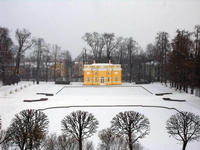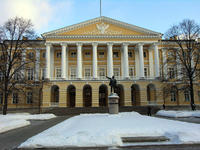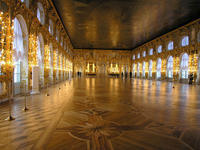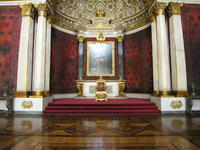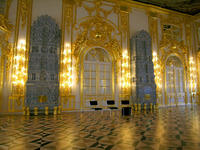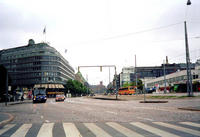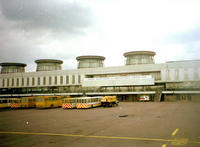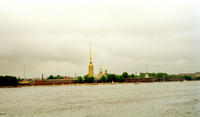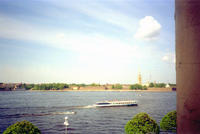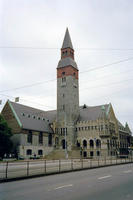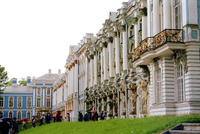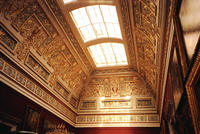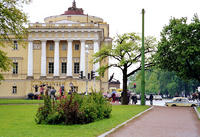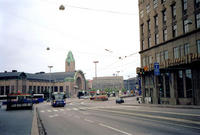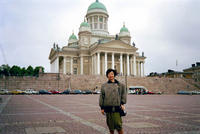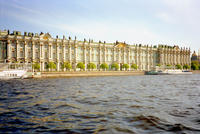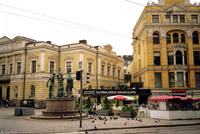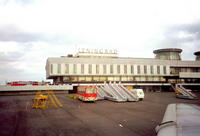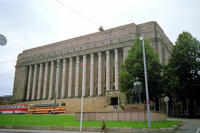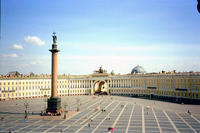You are in: Europe -> Russia -> Historic Centre of S... , and traditional search or Image Gallery will yield results of this site only
Historic Centre of Saint Petersburg and Related Groups of Monuments
| Site number: | 540 |
|
| Type of site: | Cultural | |
| Date: | 1703 | |
| Date of Inscription: | 1990 | |
| Location: | Eurasia, Russian Federation, St. Petersburg region | |
Up to 75 images are shown here. Click on each for more details or on Image Gallery for more images.
Six official UN languages:
Arabic,
Chinese,
English,
French,
Russian,
Spanish
Other languages: Alemmanic German, Aragonese, Basque, Bulgarian, Catalan, Chuvash, Czech, Danish, Dutch, Esperanto, Estonian, Farsi, Finnish, Galician, Georgian, German, Greek, Hebrew, Hungarian, Indonesian, Irish Gaelic, Italian, Japanese, Korean, Latin, Latvian, Lithuanian, Luxembourgish, Macedonian, Norman, Norwegian-bokmål, Norwegian-nynorsk, Polish, Portuguese, Romanian, Serbian, Slovak, Slovenian, Swedish, Tagalog, Turkish, Ukrainian, Vietnamese, Welsh, Serbo-Croatian
Other languages: Alemmanic German, Aragonese, Basque, Bulgarian, Catalan, Chuvash, Czech, Danish, Dutch, Esperanto, Estonian, Farsi, Finnish, Galician, Georgian, German, Greek, Hebrew, Hungarian, Indonesian, Irish Gaelic, Italian, Japanese, Korean, Latin, Latvian, Lithuanian, Luxembourgish, Macedonian, Norman, Norwegian-bokmål, Norwegian-nynorsk, Polish, Portuguese, Romanian, Serbian, Slovak, Slovenian, Swedish, Tagalog, Turkish, Ukrainian, Vietnamese, Welsh, Serbo-Croatian
| Description: | St. Petersburg, in the former USSR known as Leningrad, formed as a result of a vast urban project begun under Peter the Great in 1703, now the 'Venice of the North' with its many canals and more than 400 bridges, the city is directly associated with the October Revolution. Its architectural heritage merges the dissimilar Baroque and pure neoclassical styles, which is exposed in the Admiralty, the Winter Palace, the Marble Palace as well as the Hermitage. --WHMNet paraphrase from the description at WHC Site, where additional information is available. | |
| Historic Centre of Saint Petersburg and Related Groups of Monuments is the name used by UNESCO when it collectively designated the historic core of the Russian city of St. Petersburg, as well as buildings and ensembles located in the immediate vicinity as a World Heritage Site in 1991. The site was recognized for its architectural heritage, fusing Baroque, neoclassical and Russian influences. Among the buildings and places included in the citation: Historic Centre of St. Petersburg, Historical Part of the Town of Kronstadt, Fortress of Kronstadt, Forts of the Island Kotlin, Forts of the Gulf of Finland, Historical Centre of the Town of Petrokrepost (Schlisselburg), Fortress "Oreshek" on the Island Orekhovy at the Source of the Neve, Palaces and Park Ensembles of the Town of Pushkin and its Historical Centre. Saint Petersburg is a city and a federal subject located in Northwestern Federal District of Russia on the Neva River at the east end of the Gulf of Finland on the Baltic Sea. St. Petersburg's informal name, Piter (Питер), is based on how Peter the Great was called by foreigners. The city's other names were Petrograd (Петрогра́д, 1914–1924) and Leningrad (Ленингра́д, 1924–1991) Founded by Tsar Peter the Great on May 27, 1703, it was capital of the Russian Empire for more than two hundred years (1712-1728, 1732-1918). St. Petersburg ceased being the capital in 1918 after the Russian Revolution of 1917. It is Russia's second largest and Europe's third largest city (by city limit) after Moscow and London. Saint Petersburg is a major European cultural center, and important Russian port on the Baltic Sea. St. Petersburg enjoys the image of being the most European city of Russia. Among cities of the world with over one million people, Saint Petersburg is the northernmost. The historic center of St. Petersburg is a UNESCO World Heritage Site. Russia's political and cultural center for 200 years, the city is impressive, and is sometimes referred to in Russia as "the Northern Capital" (северная столица, severnaya stolitsa). --Wikipedia. Text is available under the Creative Commons Attribution-ShareAlike License. | ||
| Source: | http://whc.unesco.org/en/list/540 | |
| Reference: | 1. UNESCO World Heritage Center, Site Page. | |







